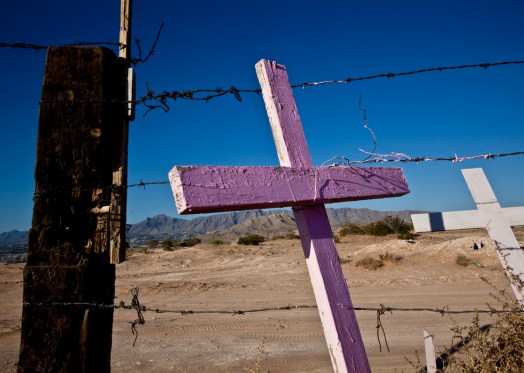Under the bridge

Narcos-related violence has somehow gone down here in Ciudad Juárez: the “murder capital of the world” now records a monthly average of 30 killings, ten times less than two-three years ago when the war for the control of drug routes into the US was at its peak. The Juárez and Sinaloa cartels have apparently realized that too much bloodshed was harming the business. And money is what they are looking for: a lot of money. Billions of dollars that come from drug smuggling (marijuana, cocaine, heroin, methamphetamine) and, increasingly, from human trafficking.
Migrants from Central America and the poorest Mexican provinces keep pouring in great numbers, hoping to cross into the American dreamland in search of a job or to join some friends and family members. You meet them near the Juárez-El Paso bridge, in the shelters provided by public and religious organizations, sitting speechless in the streets or wandering along “the line”: the 2,500 miles border stretching from Tijuana to the blood-soaked pueblos of the Tamaulipas narco-state.
Undeterred by the iron fences, the drones, the sensors, the cameras, the Border Patrols, the threat of deportation, the extreme weather, the rattle snakes and the hair-trigger vigilantes on the Texas and Arizona sides, they push on, fleeing from poverty and horrific crime rates at home. But as the crossing becomes more difficult the cartels are making more money. The traffickers, called coyotes or polleros, referring to the men who cram chickens into cages, charge between 5,000 to 10,000 dollars to each migrant. And in Juárez more money must be paid to the Aztecas, the gang that controls the turf.
The number of minors travelling alone is also increasing at an alarming pace. And they face even higher risks. Girls are being raped and boys are often used as narcotics mules: they are given mochilas, backpacks, full of drugs to take across the border as a way to pay back the polleros. About 47,000 unaccompanied minors have been arrested last year and the US Border Patrol estimates that 60,000 could be caught in 2015. Most end up in detention centers and are deported. Many are kidnapped by human traffickers and held hostage for a ransome. Others are killed. Some, like 12-year-old deportee Nohemí Álvarez, choose a different path. Faced with the prospect of returning to her home country the little girl from Ecuador grabbed a shower curtain in Juárez’s La Esperanza shelter, tied it around her neck and hanged herself.





